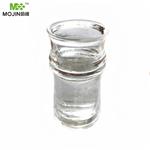Chemical Properties
colourless liquid
Uses
n-Hexadecane-d34 is the labeled compound of Hexadecane(H293630). Hexadecane has been used to prepare emulsions in water. It is also used as a substrate for the bacterial production of biosurfactants.
Uses
N-hexadecane was used as a solvent, a gas chromatography comparison sample, and a standard substance for the determination of diesel combustion quality. The cetane number of diesel oil is equal to the body percentage of decabane contained in standard fuel (a mixture of cetane and a-methylnaphthalene) when the combustion quality is the same as that of the diesel under evaluation under specified working conditions. N-hexadecane is used as a gas chromatography reference substance and a fixed solution and solvent. Also used in organic synthesis.
Uses
Employed in industry as Adsorbents, Fuels and fuel additives. Also in Fabric, Textile, and Leather Products. Solvent, organic intermediate, ignition standard for diesel fuels. Fuels and Related Products. Hexadecane is use in the recovery of valuable amines by means of distillation from aqueous alkanolamine solutions, which are extensively used in the gas-processing industries.
Uses
Hexadecane is a component of gasoline, and is used as a
solvent, organic intermediate, ignition standard for diesel
fuels, and as stock for hydrocracking processes.
Definition
ChEBI: Hexadecane is a straight-chain alkane with 16 carbon atoms. It is a component of essential oil isolated from long pepper. It has a role as a plant metabolite, a volatile oil component and a non-polar solvent.
General Description
Colorless liquid.
Air & Water Reactions
Flammable. Insoluble in water.
Reactivity Profile
Saturated aliphatic hydrocarbons, such as N-HEXADECANE-D34, may be incompatible with strong oxidizing agents like nitric acid. Charring of the hydrocarbon may occur followed by ignition of unreacted hydrocarbon and other nearby combustibles. In other settings, aliphatic saturated hydrocarbons are mostly unreactive. They are not affected by aqueous solutions of acids, alkalis, most oxidizing agents, and most reducing agents. When heated sufficiently or when ignited in the presence of air, oxygen or strong oxidizing agents, they burn exothermically to produce carbon dioxide and water.
Health Hazard
ACUTE/CHRONIC HAZARDS: Flammable.
Purification Methods
Pass cetane through a column of silica gel and distil it under vacuum in a column packed with Pyrex helices. Store it over silica gel. It also crystallises from acetone, or fractionally crystallise it by partial freezing. [Beilstein 1 IV 537.]






